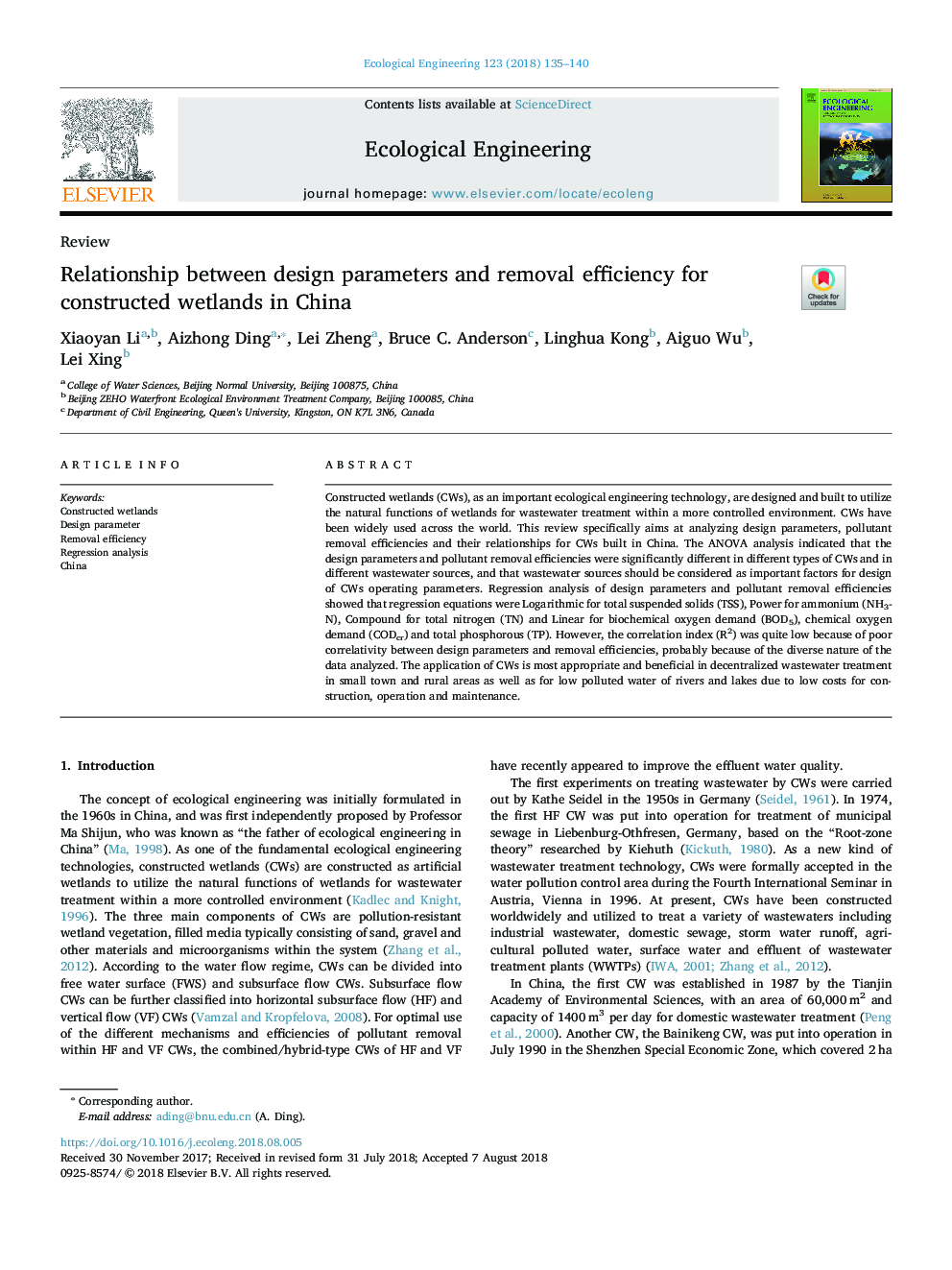| Article ID | Journal | Published Year | Pages | File Type |
|---|---|---|---|---|
| 10144359 | Ecological Engineering | 2018 | 6 Pages |
Abstract
Constructed wetlands (CWs), as an important ecological engineering technology, are designed and built to utilize the natural functions of wetlands for wastewater treatment within a more controlled environment. CWs have been widely used across the world. This review specifically aims at analyzing design parameters, pollutant removal efficiencies and their relationships for CWs built in China. The ANOVA analysis indicated that the design parameters and pollutant removal efficiencies were significantly different in different types of CWs and in different wastewater sources, and that wastewater sources should be considered as important factors for design of CWs operating parameters. Regression analysis of design parameters and pollutant removal efficiencies showed that regression equations were Logarithmic for total suspended solids (TSS), Power for ammonium (NH3-N), Compound for total nitrogen (TN) and Linear for biochemical oxygen demand (BOD5), chemical oxygen demand (CODcr) and total phosphorous (TP). However, the correlation index (R2) was quite low because of poor correlativity between design parameters and removal efficiencies, probably because of the diverse nature of the data analyzed. The application of CWs is most appropriate and beneficial in decentralized wastewater treatment in small town and rural areas as well as for low polluted water of rivers and lakes due to low costs for construction, operation and maintenance.
Related Topics
Life Sciences
Agricultural and Biological Sciences
Ecology, Evolution, Behavior and Systematics
Authors
Xiaoyan Li, Aizhong Ding, Lei Zheng, Bruce C. Anderson, Linghua Kong, Aiguo Wu, Lei Xing,
